Ethereal color variant of mysterious plant is actually new species
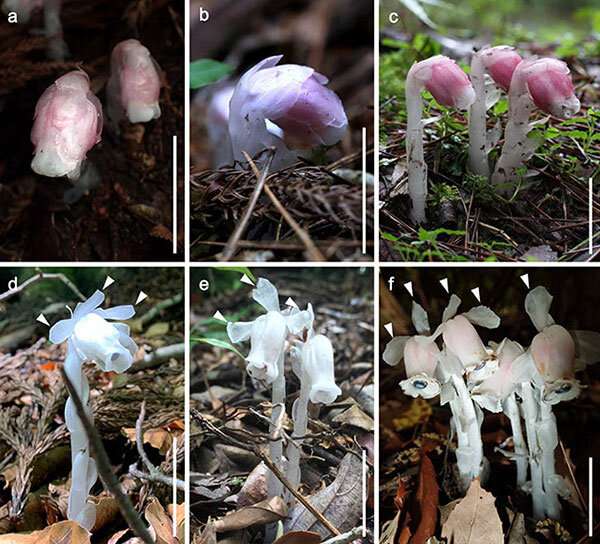
Green leaves and photosynthesis were once considered essential characteristics of plants. However, some plants have stopped performing photosynthesis and take the nutrients they need from other organisms instead. One such mycoheterotrophic plant is the ghostly-looking Monotropastrum humile, which is widely found across East and Southeast Asia. It often grows in woodlands where there is little sunlight, obtaining the nutrients it needs by feeding off the hyphae of fungi.
Despite its wide distribution, it was previously believed that only one species of this plant existed in the world. However, Professor Suetsugu Kenji and colleagues have discovered that a variant found in Japan is actually a new species, shaking up our understanding of this unusual-looking genus of plants. Their findings are published in the Journal of Plant Research.
The plant has rosy pink petals and stems resembling milk glass, giving it a beautiful, otherworldly appearance. As it was first found around Kirishima in Kagoshima Prefecture, Japan, the new species has been named Monotropastrum kirishimense.
Originally, this new species was tentatively treated as a color variant of M. humile, known as M. humile f. roseum. Thus began an extensive and multifaceted 20-year study to determine how exactly these plants differed. Specimens were collected from throughout Japan and Taiwan, as well as Vietnam.
-
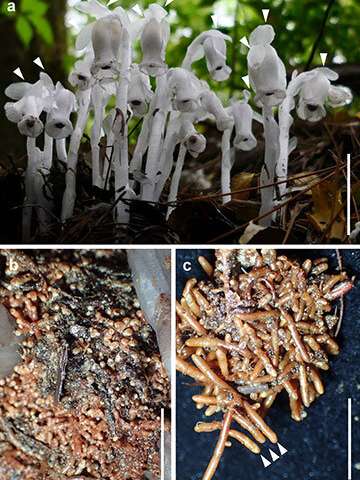
Figure 2. M. humile plants that grow in the same locality as M. kirishimense. (a). Flowering plants, (b). Underground part of the plant, (c). The rootball. As indicated by the arrowheads, the root tips are easily recognizable. Scale bar: 3 cm (a), 1 cm (b), 5 mm (c). Credit: Hideo Shimada (a) and Kenji Suetsugu (b-c) -
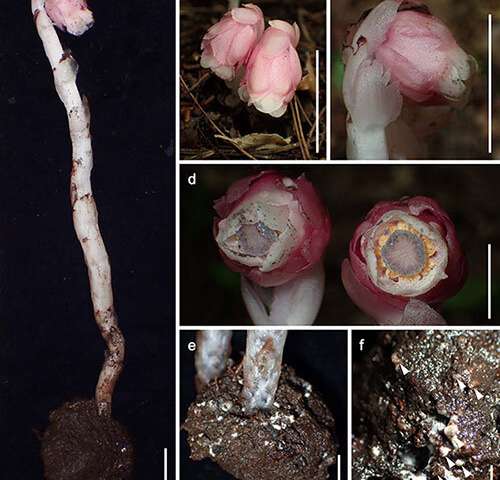
Figure 3. M. kirishimense. (a). An individual flowering plant, (b-d). Magnified flowers (e). Underground part of the plant, (f). Magnified image of the rootball. As indicated by the arrowheads, root tips are not apparent but white fungal hyphae are visible. Scale bar: 3 cm (a-c), 1 cm (d, e), 5 mm (f). Credit: Kenji Suetsugu
Results of various analyses revealed morphological differences, including the following:
- M. kirishimense flowers and ovaries are more rounded than those of M. humile, and its rootball is more obscured by the surrounding soil (in contrast to M. humile's protruding root tips).
- M. kirishimense individuals are shorter above ground (under 5 cm) and longer below ground (over 10 cm).
- The flowering season is different too; M. humile flowers bloom approximately 40 days earlier than M. kirishimense. As the two plant species have the same primary pollinator (the bumblebee Bombus diversus), this difference in flowering times can reduce heterospecific pollen deposition, helping to ensure conspecific mating, and thereby preventing them from producing hybrids.
There are several other possible reasons why M. kirishimense and M. humile may have evolved into separate species. One possibility is that they have become specialized in feeding on different fungi, which has led to reproductive isolation, or the inability to produce offspring together. This process is known as resource partitioning and is one of the major ways that species can evolve from a common ancestor. Genetic analysis of mycobionts revealed that M. kirishimense has a consistent, specialized association with a particular lineage of fungi, whereas M. humile is associated with different lineages.
Therefore, this study suggests that M. kirishimense may have evolved into a new species by relying on a specific type of fungus. In fact, the phylogenetic tree (a "family tree" of the evolutionary history of a group of organisms) of the plants themselves shows that the genetic characteristics of M. kirishimense and M. humile can be separated into two clades. Based on the researchers' analysis of various characteristics, it has been revealed that M. kirishimense is distinct from M. humile in terms of its appearance, flowering patterns, evolutionary history, and ecological relationships. Therefore, the researchers concluded that it should be recognized as an independent species.
-
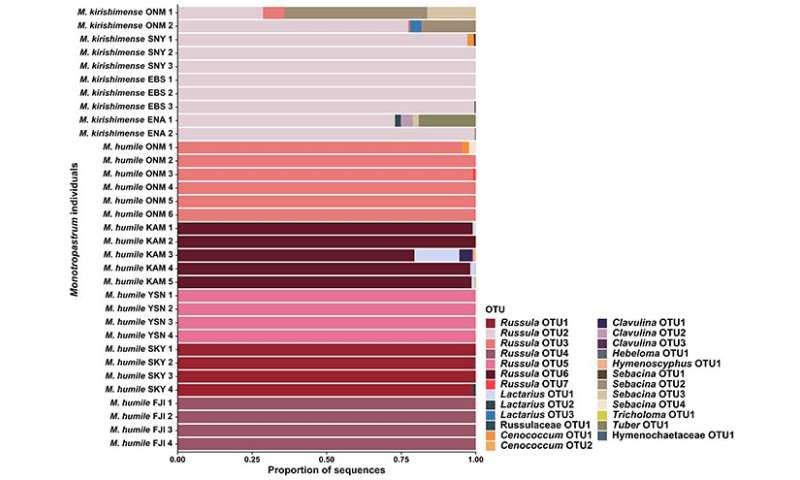
Figure 4. Fungal lineages associated with M. kirishimense and M. humile. M. kirishimense and M. humile (including color variant M. humile f. roseum) depend on different lineages of fungi. Credit: Journal of Plant Research (2022). DOI: 10.1007/s10265-022-01422-8 -
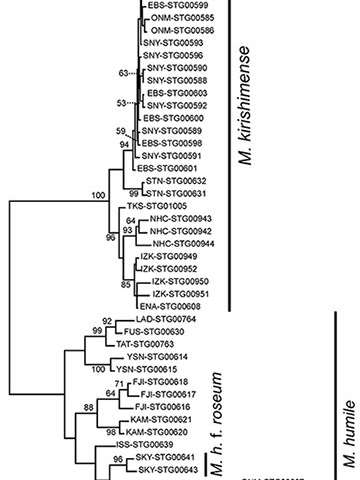
Figure 5. The phylogenetic tree for M. kirishimense and M. humile. The genetic characteristics of M. kirishimense and M. humile (including color variant M. humile f. roseum) are clearly separated. Credit: Journal of Plant Research (2022). DOI: 10.1007/s10265-022-01422-8
Overall, the research group not only revealed that M. kirishimense is a distinct species but also deepened understanding of plants in the Monotropastrum genus. Mycohetrotrophic plants are very vulnerable to extinction as they rely on specific ecosystems to survive and are usually found in old-growth forests. The newly recognized species, M. kirishimense, is rare and presumably endangered.
Now that it has been identified as a new species, conservation efforts can be made to protect it. This study emphasizes the importance of combining various analysis methods, called integrative taxonomy, to fully understand and protect biodiversity.
More information: Kenji Suetsugu et al, Monotropastrum kirishimense (Ericaceae), a new mycoheterotrophic plant from Japan based on multifaceted evidence, Journal of Plant Research (2022). DOI: 10.1007/s10265-022-01422-8
Provided by Kobe University


















